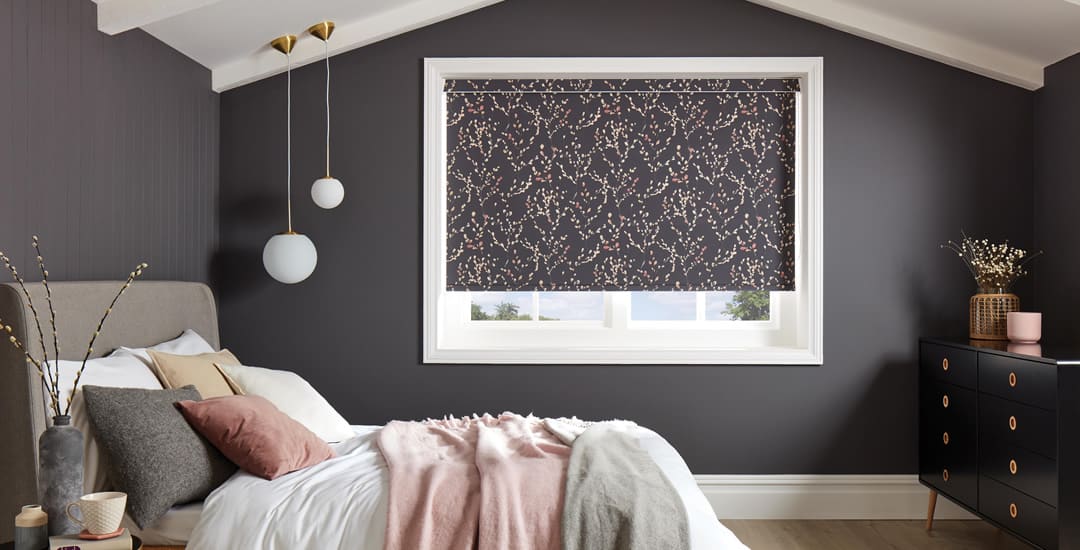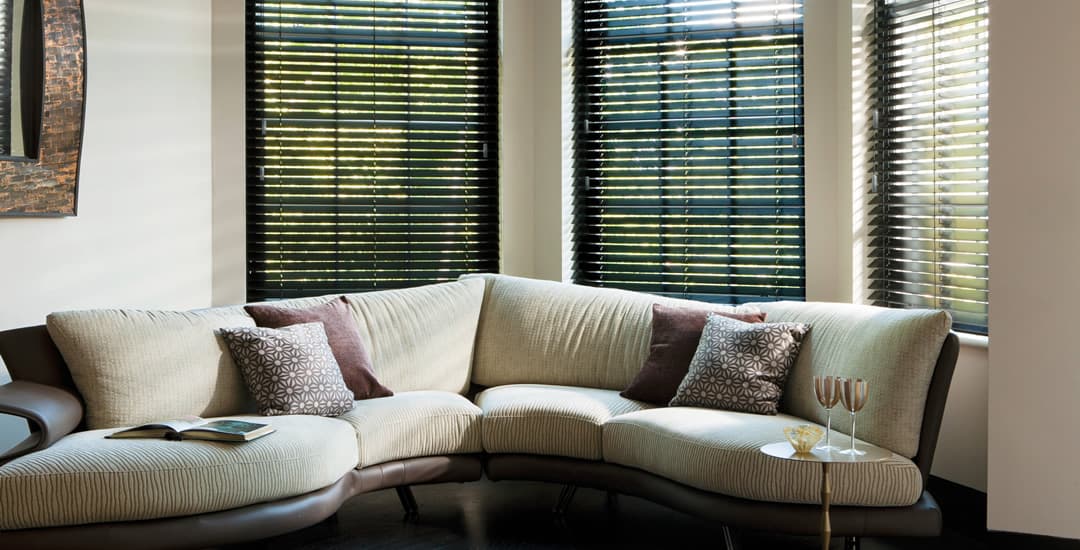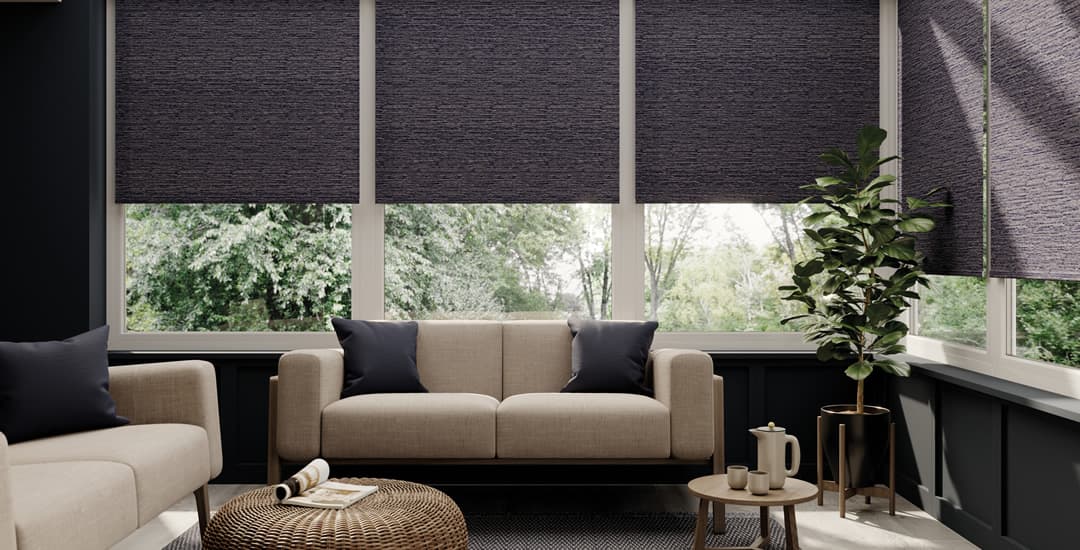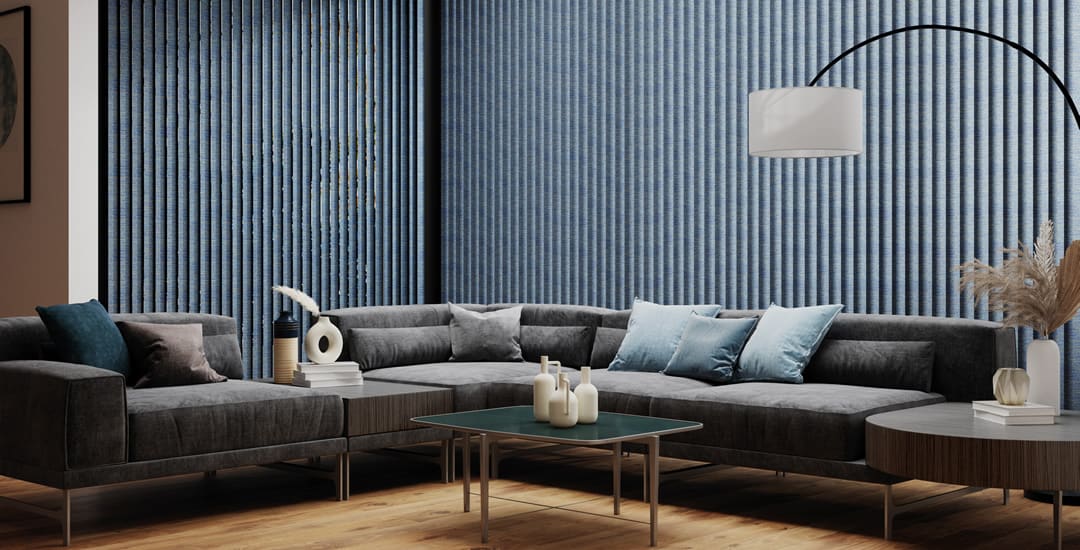
Do dark blinds make a room look smaller? Yes, in most people’s opinions. This effect is achieved because dark colours absorb light rather than reflecting it, and also because darkening a room in general tends to bring the visual scale of the walls inwards, by means of the interplay of shadows and the illusive sense of perspective that darkness can bring.
Whilst I may be making this sound a little claustrophobic or even sinister in terms of the impact that dark blinds can achieve, in reality this is rarely the case. Making a room appear smaller and/or blurring the visible edges of a room can make it feel cosier and quite literally warmer; which makes sense as the flipside of “airy,” often used to describe large, open and light-coloured spaces is of course “chilly!”
That said, blinds do also help to insulate a room quite effectively anyway, particularly if they’re a type of blind designed specifically for this purpose; and so you might well notice a genuine change in the ambient temperature of a room with new dark blinds, on top of the psychosomatic impact of drawing the walls in a little!
This blog post will look at the impact dark blinds can have on a room in more detail to ensure you get the full picture to help you to make your own choice about whether or not dark blinds are the way to go.
Do dark blinds make a room look smaller if the room is already small?

Making a room look a little less “roomy” might not be a big deal if the room is already quite generously proportioned, but if that’s not the case, this might be the very last thing you’d want to do. Dark blinds make a room look smaller if it is already small; but that said, the extent to which this happens tends to be less acute, rather than more acute, the smaller the room is.
In a large room, the interplay of shadows and the fact that darkening the room means you might not be able to see a clear delineation of the room’s walls and borders serves to potentially “shrink” the room visually to quite an extent.
Imagine if you had a very large lounge, for instance, that was totally dark apart from the use of an angled table lamp with a soft, warm-hued bulb in it. Aside from the area of the room that is illuminated by the light being cast, most people would be hard pressed to accurately determine its size, and one’s brain and imagination tends to fill in the blanks in situations like this, and very often, with no great degree of accuracy!
The simplest things can impact upon one’s mental perception of a space when your eyes can’t be trusted to give you the full picture too; if, say, the room was comfortably warm or even a shade hot, most people sitting in my theoretical lounge scenario above would assess the room as being smaller than they would if the room was chilly.
Scents can have an impact as well. Cool or outdoors-y scents like pine for instance, and the sort of room scents that are named things like “summer meadow” and “ocean breeze” will tend to make people think of the room as being larger or more open. Scents such as vanilla and more or less anything else food-related brings up associations of cosiness and so, a smaller space in turn!
Overall, if you have a room that’s objectively small anyway, using dark blinds certainly won’t make the space seem larger or airier; and using light blinds (and paint and furniture choices) can definitely help to achieve that if this is what you’re looking for. But dark blinds and walls/furniture probably won’t shrink the space in visual terms by much, because there is less “room” for shadow and the sort of visual illusions that can make larger spaces look smaller by means of obscuring their borders and softening transition points.
Do dark blinds make a room look smaller in the cosy sense of the word?

Most people who ask “do dark blinds make a room look smaller” are asking because they want to avoid doing this; but in some cases, making a room look smaller may be desirable, if this helps to make a space like say, a living room or bedroom feel cosier, warmer, and homier.
This can definitely be achieved by using darker-hued blinds, but this is not the full story; you need to choose warm toned dark blinds (rather than cool toned ones) to pull this off effectively. Any colour can be either warm or cool toned; historically, received wisdom was that colours like red, orange, and yellow were warm and that blue, green, and purple were cold, but this definitely doesn’t hold up to scrutiny!
Taking yellow as an example; the yellow of an egg yolk is warm toned, while the yellow of a lemon is cool toned. This means that you can in fact have warm toned blues, greens, purples, and even greys.
Combining a warm tone with a darker colour blind can be a very effective way to make a room look cosier.
Do dark blinds darken a room during the day?

The whole point of blinds (or at least, one of their main purposes) is to darken a room or keep the light out of it. If you close your blinds during the day, they will darken the room; even if the blind itself is a light colour. The extent to which this happens will vary depending on things like the type/thickness of blinds; blackout blinds can theoretically block all external light if hung correctly, while other types of blinds produce more of a light dimming or diffusing effect.
Blinds that can be used to filter light again have their own impact, giving you more control over how dark a room becomes, all of which is again less dependent on colour and more on the thickness of the material and position of the blind.
But what if you want to use dark blinds but still keep a reasonable daytime lighting level in the room when they’re closed, is there anything you can do? Dark blinds make a room look smaller if the room is dim overall and everything else in it is dark as well, so these are areas you can look to address.
This means that making good choices for the colour of the walls and also any furniture, and of course controlling the supplementary lighting you have in the room as well are other things you can do. Dark blinds make a room look smaller when closed, obviously; but when they’re open, this isn’t necessarily the case. This might seem like “obvious statement of the year,” if you think of an open blind as being virtually invisible and so, its colour is irrelevant.
But some types of blinds still take up a fairly large footprint over the wall (or possibly even window) when closed, like Roman blinds, and both wooden and faux-wood blinds. This means that while you will of course get the benefit of the light through the window to balance out the impact of the blind’s colour, they might still have something of a presence in the room anyway, even when opened to their full extent.
With this in mind then, it is important to take into account not only the colour of the blind and its impact when it is closed, but how much of the blind you can see when it is open.
Roller blinds, Venetian blinds, and day and night blinds all open to a very small footprint, which more or less negates the impact of their colour when open. Vertical blinds tend to open into a fairly narrow stack of louvres; but a lot of louvres (such as you would have on a wide window) can become somewhat visible.
Roman blinds, wooden blinds, and faux-wood blinds all tend to take up a reasonable amount of space when open. For wood and faux-wood blinds, this is dependent on the height of the window/length of the stack of slats, and for short blinds, won’t necessarily be overly large.
Hopefully this covers the basics of what you need to factor in when it comes to using dark blinds and the impact this has on your room, but if you have any questions or anything to add, please tell me in the comments.




